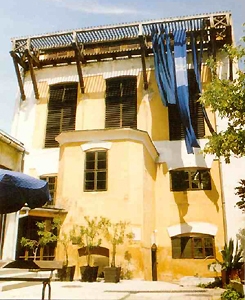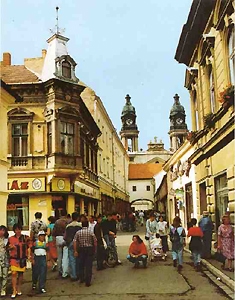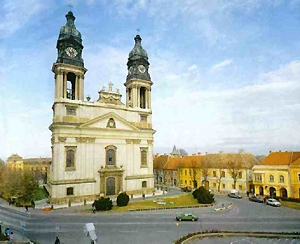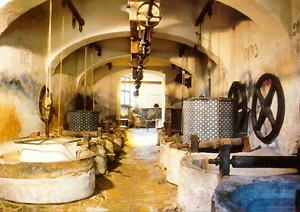Popular destinations nearby
Székesfehérvár,
Tata,
Tatabánya,
Bakonybél,
Dunaújváros,
Eplény,
Gárdony,
Komárom,
Pápa,
Várpalota,
Velence,
Zirc,
Ajka,
Alcsútdoboz,
Ászár
|
Pápa with 33,000 inhabitants is one of the most beautiful baroque small towns of Hungary. It is situated at the meeting place of the Bakony and the Small Plain. It is the cultural, economic and tourism centre of the region. It is a historic town first mentioned in records in 1061. Its importance and development is proved by the fact that in the 14th century the town was given civic privileges and at the beginning of the next century it became a market-town. Franciscans and Paulites settled down here. In the late Middle Ages it was the most important centre of Protestantism in Transdanubia. It is also called the town of churches, as it has 13 beautiful ones. A symbol of the town is the Great Church in the Main square, which was built according to the plans of Jakab Fellner between 1774 and 1786. It was decorated with frescoes by Franz Anton Maulbertsch. The 'white church' in the Main street built by the Paulites, later home of the Benedictine order, was completed by 1744. Its furnishing is valuable decorated with unique wood-carving. The 17th century so called 'Black Christ' can be found in its parvis. The Franciscan church is in Barát street, it was built between 1678 and 1680. Pápa has been the centre of the Transdanubian Reformed Church: its famous college was founded in 1531. Its spirituality has had a significant role in the life of the town since then. Pápa is considered to be a school town. The present building of the college was built between 1895 and 1899. Today a secondary school of six and four classes and the Pápa Reformed Collection (library, archives, museum) can be found there. The Old college is in Petőfi Sándor street, beside it there is a plaque on Sándor Petőfi's one-time house. The Calvinist old church houses the permanent exhibition of the Museum of Religious Art. The famous Museum of Blue-dyeing is opposite the Calvinist College. The blue-dyeing workshop of the Kluge family was one of the most significant in Central Europe. It worked until 1956, its original furnishings and equipment can be seen even today. Next to the hospital you can find the Gránátalma (pomegranate) Pharmacy, which is also a pharmacy museum. In the town and in the town centre you can find several other important restored monument buildings in their original forms. The town was awarded the Hill-coin for creating a beautiful townscape in 1989. Another important building of the Main square is the building complex of the Esterházy-mansion, the park of which is a nature conservation area. The reading hall of the library in the mansion was awarded the Europa Nostra-prize after the restoration of the former mansion chapel. The frescoes on the ceiling are especially valuable. The restoration of the baroque mansion started in 2000 and works are still underway. Apart from the baroque mansion and the Great Church in the Main square, the town is also proud of its baroque dwelling houses. In the historical part of the town there is a considerable number of monuments and locally protected buildings. Several of them house galleries or temporary exhibitions. A new tourist attraction of the town is the bathing, camping and sports centre built in the Castle garden. Next to the impressive fun bath and swimming pool, the sports hall and the stadium are suitable for organizing international sports events. Next to the fun bath the first and single 5-star camping-site of Hungary awaits visitors in a territory of 400 ha. Several famous festivals attract visitors to the town. Lodgings in Pápa: More lodgings in Pápa Pictures of Pápa
|
Pápa map nagyítása >>
|
|
|
Hungary - Pápa |
|
|
|
||
|
Wednesday, 9. July 2025. - 14:37:53 |
||



